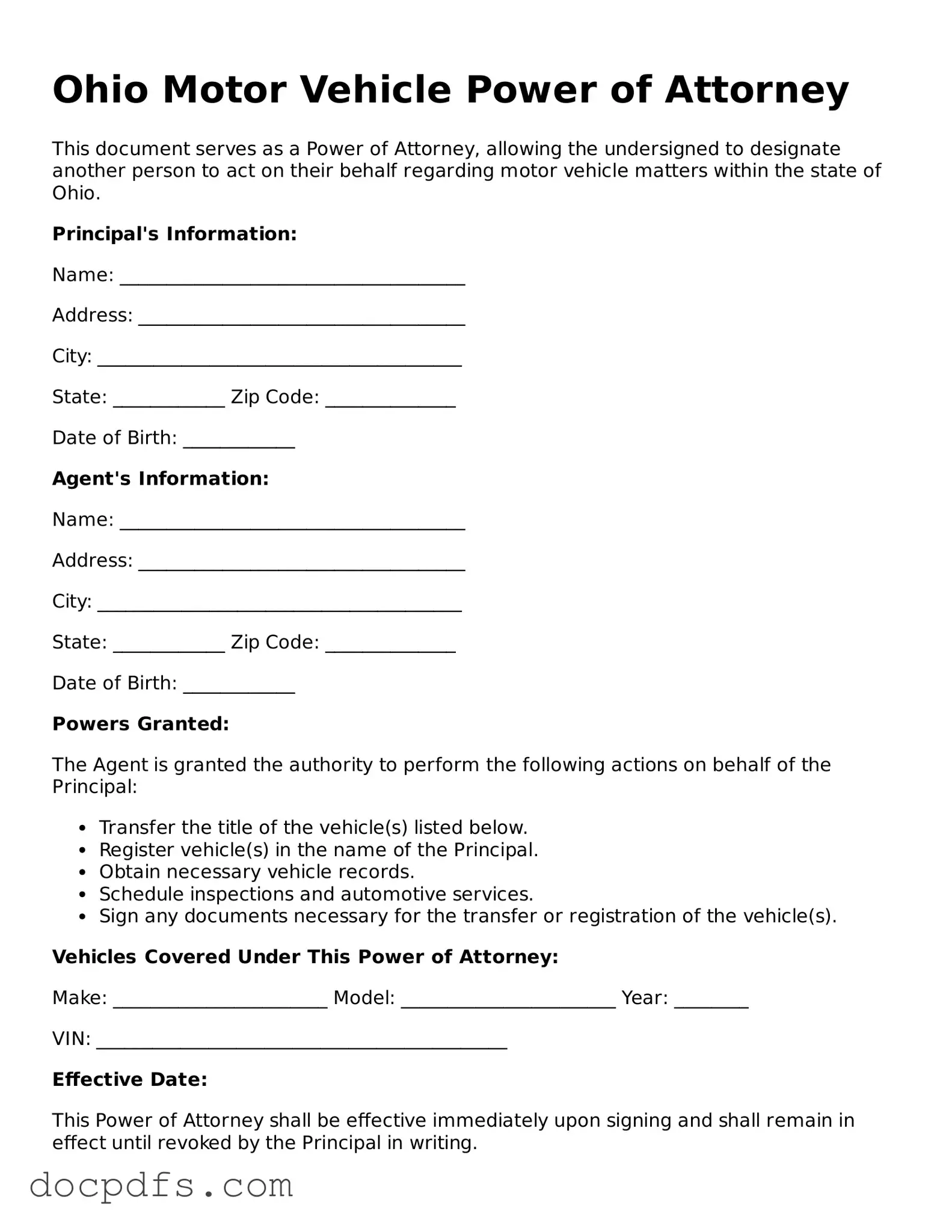The Ohio Motor Vehicle Power of Attorney form is a legal document that allows an individual, referred to as the principal, to grant authority to another person, known as the agent, to handle specific motor vehicle-related transactions on their behalf. This can include tasks such as transferring title, registering a vehicle, or obtaining a duplicate title. The form ensures that the agent can act in the principal's best interest regarding motor vehicle matters.
Who can be appointed as an agent in the Power of Attorney?
Any competent adult can be appointed as an agent in the Ohio Motor Vehicle Power of Attorney. This could be a family member, friend, or trusted associate. It is essential that the individual chosen is reliable and capable of handling the responsibilities assigned to them. The principal should consider the agent's familiarity with motor vehicle processes and their ability to act in the principal's best interest.
Completing the form involves several straightforward steps:
-
Download the Ohio Motor Vehicle Power of Attorney form from a reputable source or obtain a physical copy.
-
Fill in the required information, including the principal's name, address, and the agent's details.
-
Specify the powers being granted, such as the ability to sign documents related to the sale or registration of a vehicle.
-
Sign and date the document in the presence of a notary public to ensure its validity.
Once completed, provide a copy of the signed form to the agent and retain a copy for personal records.
Yes, notarization is required for the Ohio Motor Vehicle Power of Attorney form to be considered valid. The principal must sign the document in the presence of a notary public, who will then affix their seal. This step helps to verify the identities of the parties involved and ensures that the document has been executed willingly and without coercion.
Can the Power of Attorney be revoked?
Yes, the principal has the right to revoke the Power of Attorney at any time, provided they are of sound mind. To do so, the principal should create a written notice of revocation, which should be signed and dated. It is advisable to notify the agent and any relevant parties, such as the Department of Motor Vehicles, of the revocation to prevent any future misunderstandings regarding the agent's authority.
What happens if the principal becomes incapacitated?
If the principal becomes incapacitated, the Power of Attorney remains in effect unless it specifically states otherwise. This means the agent can continue to act on behalf of the principal in motor vehicle matters. However, it is crucial for the principal to consider their wishes regarding the continuation of the Power of Attorney if they anticipate potential incapacity. They may wish to consult with a legal professional to ensure their intentions are clearly documented.
